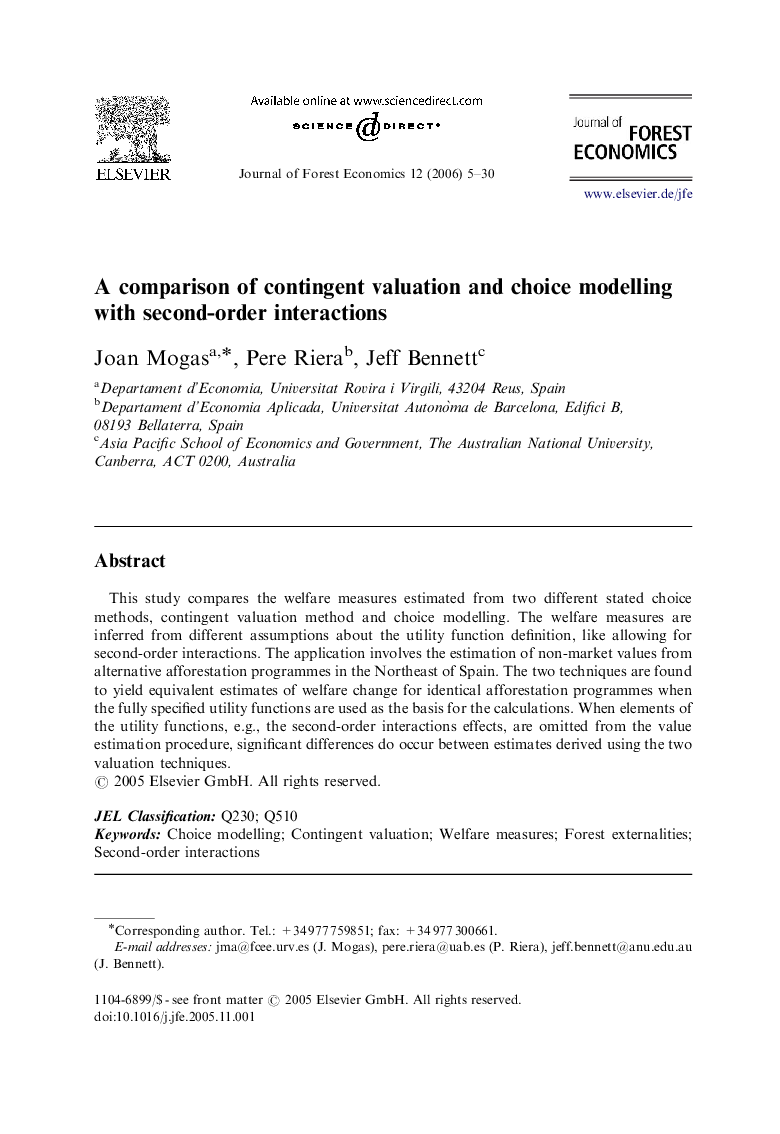| Article ID | Journal | Published Year | Pages | File Type |
|---|---|---|---|---|
| 92182 | Journal of Forest Economics | 2006 | 26 Pages |
This study compares the welfare measures estimated from two different stated choice methods, contingent valuation method and choice modelling. The welfare measures are inferred from different assumptions about the utility function definition, like allowing for second-order interactions. The application involves the estimation of non-market values from alternative afforestation programmes in the Northeast of Spain. The two techniques are found to yield equivalent estimates of welfare change for identical afforestation programmes when the fully specified utility functions are used as the basis for the calculations. When elements of the utility functions, e.g., the second-order interactions effects, are omitted from the value estimation procedure, significant differences do occur between estimates derived using the two valuation techniques.
